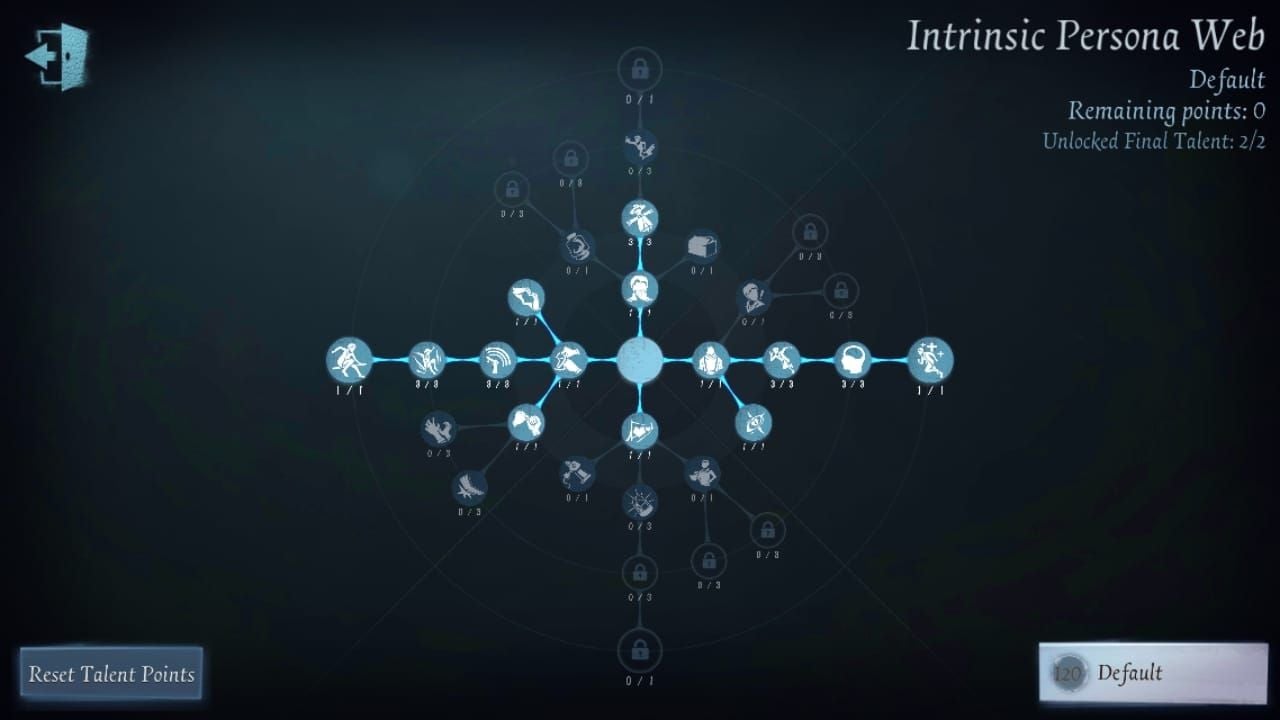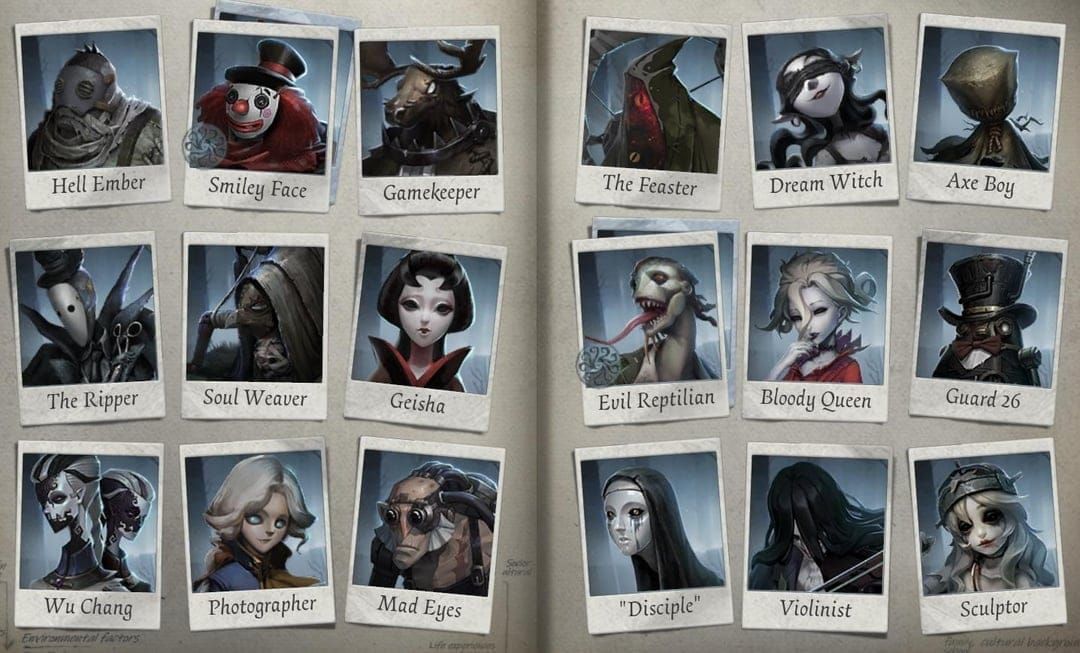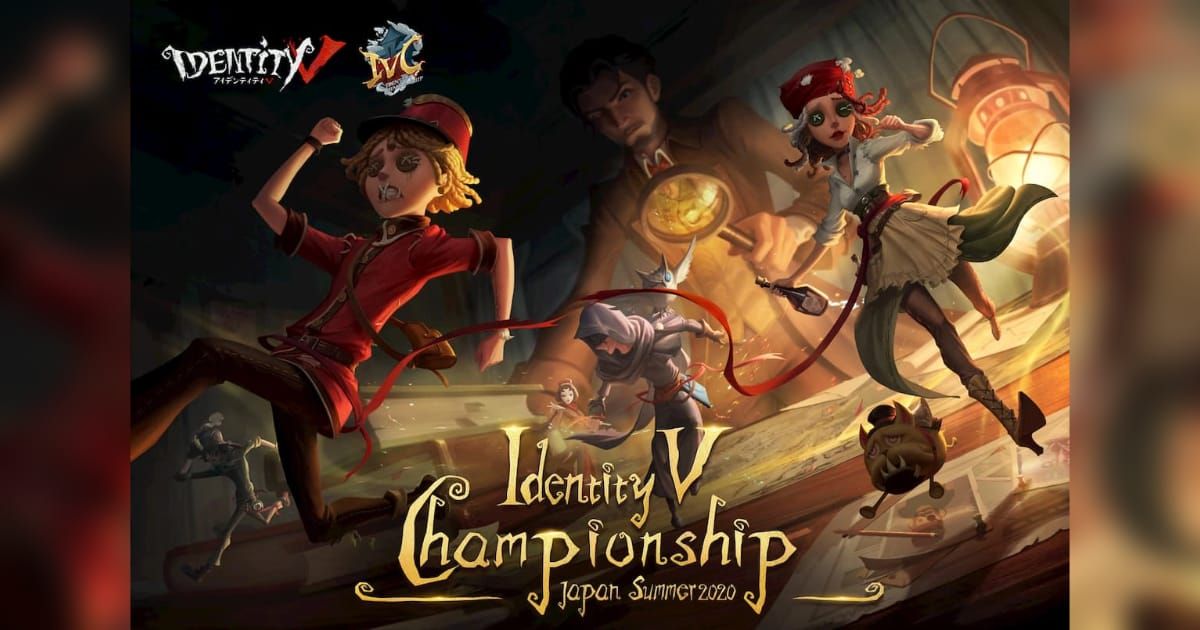When Asymmetrical Horror Finally Got Smart
What Actually Makes These Games Tick
Look, asymmetrical survival horror sounds complicated, but it"s pretty straightforward once you get it. You"ve got players with completely different jobs, goals, and ways to win. In Identity V"s case? Four Survivors trying to decode five Cipher Machines and escape through Exit Gates, while one Hunter attempts to eliminate at least three of them using Rocket Chairs.

The Hunter"s obviously stronger—that"s the whole point. Survivors need to work together and stay hidden. But here"s where Identity V gets clever: those calibrations during decoding. Miss one of those skill checks and you"re basically sending up a flare for the Hunter. The Terror Shock system? Even nastier—it deals double damage when you"re caught mid-interaction, which can instantly down a healthy Survivor.
That power imbalance creates genuine tension. One overpowered Hunter versus four weaker Survivors with completely different objectives and specialized roles. It"s psychological warfare disguised as a mobile game.
The Genre"s Rocky Start (And NetEase"s Big Bet)
Originally called “Dangerous Game” by NetEase employees—which, honestly, sounds way more ominous—Identity V was targeting what most considered a pretty small competitive market. Smart move, actually. Sometimes the best strategy is finding an underserved niche.
NetEase"s April 7, 2018 collaboration with Behaviour Interactive gave them access to Dead by Daylight"s proven mechanics. But here"s the genius part: they didn"t just copy-paste. They introduced unique Survivor abilities, completely departing from the “everyone"s basically the same character with different skins” approach that plagued early asymmetrical games.
This created something closer to MOBA team composition: Contain (Kiter), Decode, Rescue, and Assist roles. The mobile-first design required iOS 10.0+ with a hefty 3.7 GB file size—which tells you they weren"t cutting corners on graphics. That Tim Burton-inspired gothic art style? It evolved from what they describe as “grim and horrific” early versions. Smart pivot to broaden appeal while keeping the horror essence intact.
Mobile Horror Gaming"s Technical Nightmare (Solved)
Anyone who"s tried playing horror games on mobile knows the struggle. Touchscreen controls and atmospheric tension don"t exactly play nice together. Identity V tackled this through immersive onboarding that integrates tutorials into first-person detective storylines—so you"re learning while actually experiencing the world.
The audio design deserves special mention. Dynamic heartbeat intensification and contextual chase music maintain that crucial atmospheric tension despite hardware limitations. That"s not easy to pull off on mobile.
Technical innovations like Terror Shock mechanics allow for high-skill expression, while the Intrinsic Persona Web—130 talent points across passive perks with four Final Talents per faction—gives players meaningful progression. You earn points through match participation, rewarding playtime over payment. Revolutionary concept, right?

Identity V"s Mobile Horror Revolution
The Mechanics That Actually Matter
The Intrinsic Persona Web lets you allocate 130 points across passive perks, creating significant build customization. Final Talents include game-changers like Survivor"s “Tide Turner” for safe rescues and Hunter"s “Detention” for endgame power spikes. The three-strike Rocket Chair elimination system includes rescue opportunities and Dungeon escape routes for the last Survivor after two completed ciphers.
Here"s something interesting: calibration failures during cipher decoding alert Hunters, while ties occur with exactly two Survivor escapes. Recent bug fixes resolved Dream Witch Follower collision issues and prevented Priestess ultra-long passages to inaccessible areas. The developers" commitment to mechanical precision shows—this isn"t some cash-grab mobile port.
Character Design Philosophy That Works
Hunters fall into distinct categories: Chase, Camp, Map Control, Mind-Game, and Ambush specialists. Bloody Queen exemplifies Map Control through mirror-based long-range pressure; The Ripper represents Ambush tactics with invisibility mechanics. Each feels genuinely different to play.

Survivors emphasize team synergy rather than individual power. Decoders excel at cipher progression, Rescuers possess enhanced unhooking capabilities, Kiters extend chase duration. It"s rock-paper-scissors with horror movie aesthetics.
Character progression avoids pay-to-win through earned currencies: Clues purchase characters, Fragments obtain cosmetics. All gameplay-affecting content remains accessible regardless of spending levels. Maintaining competitive integrity in a mobile game? That"s rarer than you"d think.
Maps That Tell Stories While Staying Competitive
Maps balance atmospheric storytelling with competitive functionality through varied terrain density, strategic window/pallet distributions, and careful sight line management. Cipher Machine placement prevents excessive clustering while maintaining rescue accessibility.

Environmental hazards like Moon River Park"s roller coasters add mechanical complexity without disrupting core gameplay flow. These aren"t just pretty backgrounds—they"re functional competitive spaces that happen to look incredible.
Technical Wizardry on Mobile Hardware
Making Horror Atmospheric on a Phone Screen
Identity V somehow translated PC-quality horror atmosphere through sophisticated audio-visual design. That Tim Burton-inspired aesthetic creates a memorable visual identity while optimizing performance across different device specifications. The dynamic audio maintains tension through proximity-based heartbeat intensification and contextual chase music—all functioning efficiently on mobile hardware.
Environmental storytelling integrates seamlessly with competitive mechanics. Oletus Manor provides narrative cohesion while its gothic architecture serves functional chase dynamics. Form following function, beautifully executed.
Network Infrastructure for Serious Competition
The dual ranking system tracks Tier Divisions (Worker Bee to Hydra/Titan) and Character Points through robust data infrastructure. Rank Points fluctuate based on match outcomes; Character Points accumulate through character-specific ranked participation.
Regular maintenance windows address complex interaction bugs while implementing quality-of-life improvements like expanded graffiti page capacity. Cross-platform availability across iOS, Android, and Windows PC ensures broad accessibility while maintaining competitive integrity through platform-specific optimizations.
Building Communities Around Shared Terror
Beyond the Core Game Loop
Home design features provide creative outlets between high-tension matches—smart retention strategy through diverse engagement vectors. Guild systems facilitate community formation around shared interests and competitive team development. Meta-layer engagement through furniture collection creates progression goals independent of competitive ranking.
Crossover events with Persona 5, Danganronpa, and Death Note generate massive content creation opportunities. Player-friendly gacha mechanics implement anti-duplicate systems preventing repeated A-tier costume acquisition until complete collection. Actually player-friendly monetization? Revolutionary.
Supporting the Content Creation Ecosystem
Spectator systems support content creation through integrated match viewing and replay functionality. High-quality visual presentation creates naturally shareable content for streaming platforms—crucial for organic growth.
Community events coordinate global participation through in-game activities and social media integration, building shared experiences while supporting content creator participation. It"s a virtuous cycle that most mobile games completely miss.
The Esports Evolution Nobody Saw Coming
Tournament Structure That Actually Makes Sense
Call of the Abyss VI Global Finals featured $585,000 prize pools with regional leagues like Identity V Japan League (IJL) and Identity V League China (IVL) providing development pathways. Tournament formats incorporate group stages and single-elimination playoffs with strategic bye systems, culminating in offline finals in Tokyo and Hangzhou.

Elite teams from six major regions including Chinese mainland, Japan, and Southeast Asia compete globally. Regional development nurtures talent and builds fan bases while international championships showcase diverse playstyles. It"s a legitimate esports ecosystem—on mobile.
Professional Play Complexity
Professional play requires complex team coordination and individual mechanical skill that rivals traditional esports. Hunter strategies include Camping (guarding chaired Survivors), Patrol Camping (nearby area searches), and No Camping (objective pressure). Each approach demands different mechanical skills and situational awareness.
Survivor coordination requires precise communication for rescue timing, cipher progression management, and Hunter distraction. Team-level strategy development parallels traditional team-based esports complexity through role specialization and composition planning.
The skill ceiling is genuinely high—which you need for sustainable competitive scenes.
Championship Impact Beyond Prize Money
Substantial COAVI prize pools reflect NetEase"s commitment to premier mobile esports legitimacy. Championship events generate community engagement through in-game integration—players set Home Teams and earn Support Points for exclusive rewards.
Trophy Photo upgrades and team-branded cosmetics extend fan engagement beyond tournament periods. They"ve created a connection between casual play and professional competition that most games struggle with.
The Meta Game That Keeps Evolving
Hunter Diversity That Matters
Hunter archetypes serve specific tactical purposes beyond cosmetic differences. Chase specialists like The Ripper excel through enhanced mobility and invisibility mechanics; Map Controllers such as Bloody Queen revolutionize chase dynamics through ranged mirror-based attacks enabling simultaneous multi-area presence.
Camp Masters specialize in chair defense and area denial, while Mind-Game Experts employ psychological warfare through unpredictable mechanics. Ambush Predators utilize stealth-based surprise attacks requiring precise timing and positioning against coordinated teams.
Each archetype feels genuinely distinct—not just stat variations.
Survivor Team Composition Strategy
Survivor composition mirrors MOBA strategic planning through complementary ability synergies. Decoder specialists accelerate cipher progression through enhanced interaction speeds and calibration assistance. Rescuer characters possess enhanced unhooking capabilities and defensive tools including borrowed time effects and healing enhancements.
Kiter roles focus on extending chase duration through mobility tools and environmental interaction bonuses, sacrificing team utility for individual survival capability. It creates space for objective completion—classic risk/reward balancing.
Balance Philosophy in Action
Regular patch notes address specific character interactions, resolving complex issues like Dream Witch Follower positioning and Priestess portal exploitation. Community feedback influences balance philosophy regarding camping and tunneling strategies, which appear more prevalent compared to other asymmetrical horror games through intentional design choices emphasizing Hunter agency.
The developers aren"t afraid to make bold changes when the meta stagnates. Refreshing approach.
Global Success Through Cultural Intelligence
Localization That Goes Beyond Translation
Identity V generated $32.1 million in Japan during a single 30-day period—80% of their total revenue during that timeframe. That success stems from sophisticated cultural adaptation, not just professional translation addressing Japan"s limited English fluency (less than 10% comfortable with English gaming content).
Strategic IP collaborations with beloved Japanese franchises created genuine cultural resonance. High-quality localization ensures mainstream accessibility beyond dedicated international gaming communities.
The art style evolution from “grim and horrific” to Tim Burton-inspired gothic aesthetics broadened appeal, particularly among female players, without sacrificing horror atmosphere. Cultural adaptation done right.
Regional Competitive Scenes
Esports ecosystem development varies by region, accommodating local competitive gaming cultures. Identity V Japan League provides structured competition respecting Japanese professional gaming traditions, while other regions prioritize entertainment value depending on audience characteristics.
Global championship integration ensures regional diversity while maintaining competitive integrity. Elite teams contribute varied playstyles, enriching overall competitive meta and providing cross-cultural learning opportunities.
Monetization Innovation That Doesn"t Suck
Cosmetic Systems Done Right
Identity V"s $500+ million lifetime revenue demonstrates cosmetic-focused monetization effectiveness while maintaining competitive integrity. Extensive options include character costumes, accessories, pets, custom lobby themes, and music selections enabling deep personalization without affecting competitive balance.
Crossover events drive premium sales through limited-time availability and franchise appeal. Collaborations create urgency and exclusivity motivating spending while providing genuine value through high-quality artistic content and thematic integration.
Actually fair monetization in a mobile game—imagine that.
Pay-to-Win Avoidance (Actually Achieved)
Character acquisition through earned Clues currency ensures competitive access regardless of spending levels. Intrinsic Persona Web progression rewards playtime through permanent point accumulation rather than purchase requirements, maintaining fairness across economic circumstances.
Player-friendly gacha mechanics include anti-duplicate systems for crossover content, reducing the frustration typically associated with random acquisition. Quality-of-life improvements like expanded graffiti page capacity demonstrate ongoing value delivery beyond cosmetic content.
It"s a sustainable model that respects players—revolutionary concept in mobile gaming.
Industry Impact and What"s Next
Design Trends That Stuck
Identity V validates mobile-first approaches to traditionally PC-centric genres while demonstrating complex competitive mechanics viability on touchscreen devices. Unique Survivor abilities revolutionized asymmetrical horror design philosophy, moving beyond cosmetic differences to meaningful mechanical diversity.
MOBA-style team composition integration creates hybrid genre opportunities combining asymmetrical horror tension with strategic planning depth. It opened new market segments and audience expansion possibilities that competitors are still trying to replicate.
Mobile Esports Evolution
$585,000 COAVI prize pools rival traditional esports investments while showcasing mobile-specific competitive advantages. In-game esports integration through team support systems creates seamless connections between casual play and professional competition.
Regional league systems provide sustainable development pathways, building local fan bases and cultural relevance. It supports long-term competitive ecosystem growth and international talent exchange—a template others are following.
What"s Coming Next
Technical achievements and community engagement innovations establish benchmarks for future asymmetrical horror development. Cultural adaptation success, particularly in Japan, provides templates for international expansion strategies and localization approaches.
The monetization model"s effectiveness through cosmetic focus and fair play maintenance creates sustainable revenue frameworks balancing commercial success with community satisfaction. Other developers are taking notes.
The Questions Everyone"s Actually Asking
What makes Identity V"s asymmetrical gameplay different from other horror games? Identity V introduces unique Survivor abilities creating MOBA-style team roles (Contain, Decode, Rescue, Assist) unlike games with identical Survivors. Terror Shock mechanics and Intrinsic Persona Web talent systems provide skill expression unavailable in traditional asymmetrical horror games. It"s the difference between playing dress-up and actual strategic depth.
How successful has Identity V become globally? Over $500 million lifetime revenue with $32.1 million earned in Japan during one 30-day period alone. Ranks among top 10 mobile games in Japan through strategic culturalization and IP collaborations with Persona 5 and Danganronpa. Those numbers speak for themselves.
What role does competitive play serve? Call of the Abyss VI featured $585,000 prize pools with regional leagues culminating in global championships. In-game team support systems allow players to earn exclusive rewards while participating in championship events, connecting casual play with professional competition. It"s esports integration done right.
How does monetization avoid pay-to-win? All gameplay-affecting content accessible through earned currencies—Clues for characters, permanent point accumulation for talents. Player-friendly gacha systems with anti-duplicate mechanics reduce frustration while maintaining spending incentives through high-quality cosmetics and limited collaborations. Fair play actually achieved.
Ready to experience the asymmetrical survival horror game that changed everything? Join millions in Identity V"s genre-defining gameplay that generated $500+ million revenue while establishing a thriving global competitive scene. Enhance your experience with reliable Echo services to unlock this innovative horror gaming phenomenon"s full potential.

















